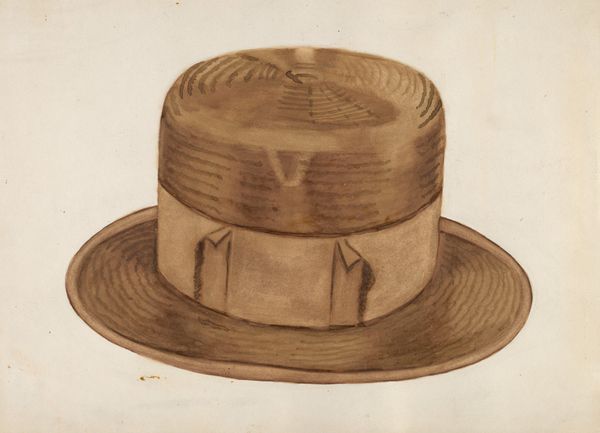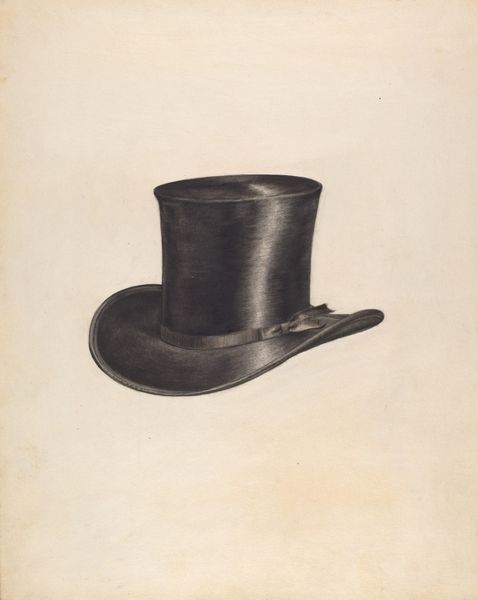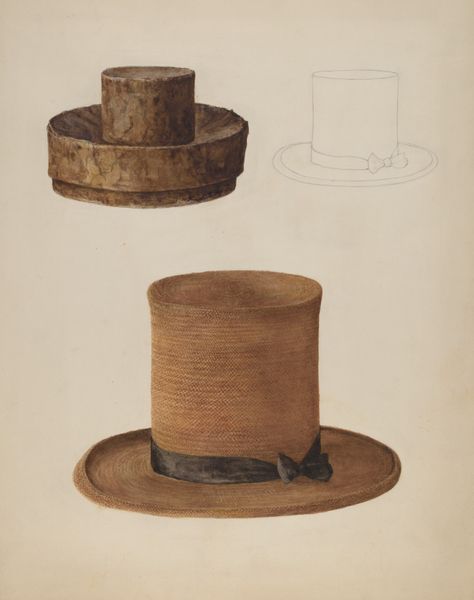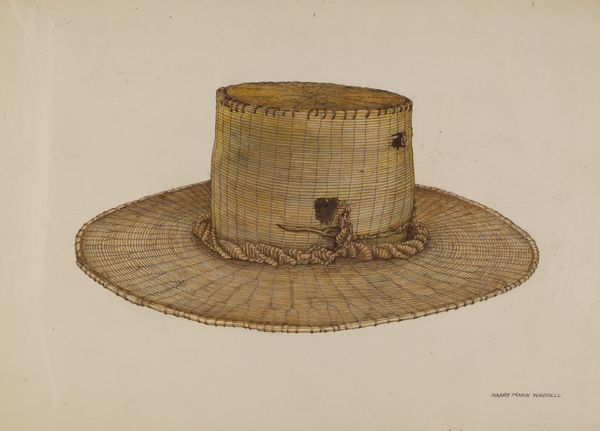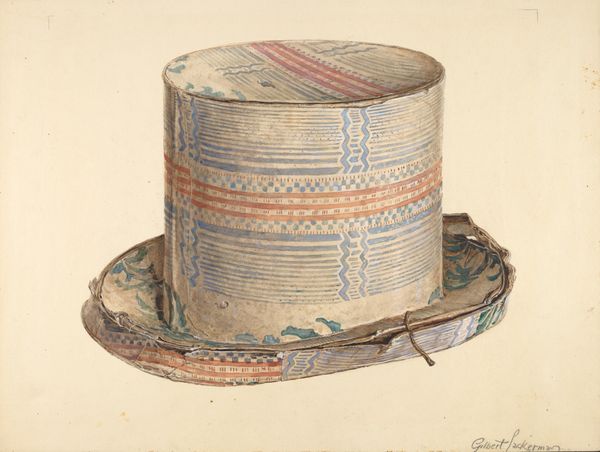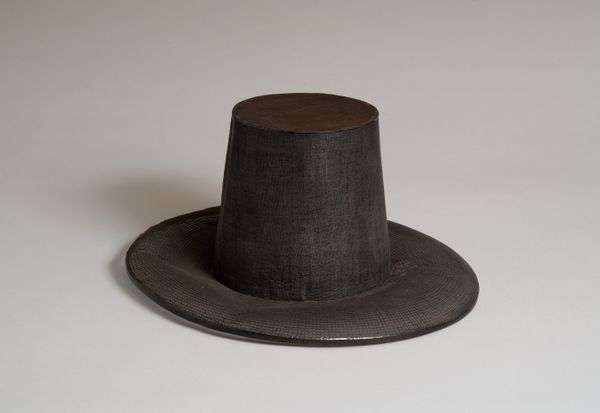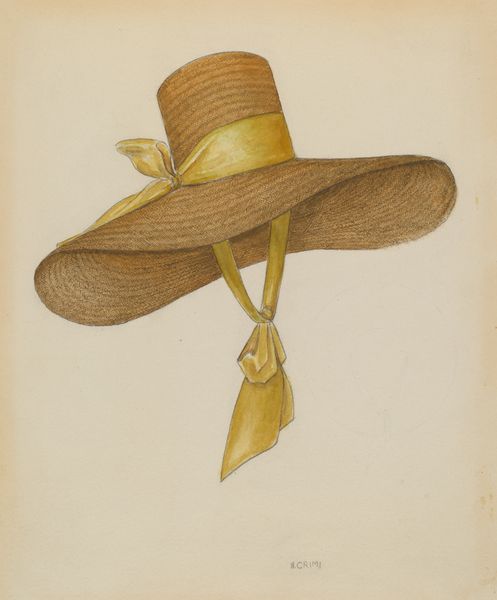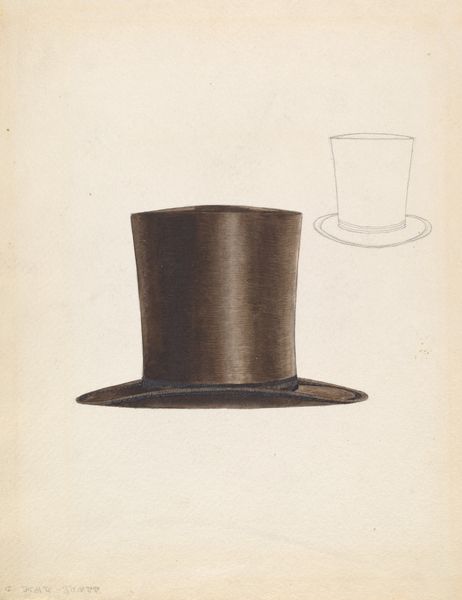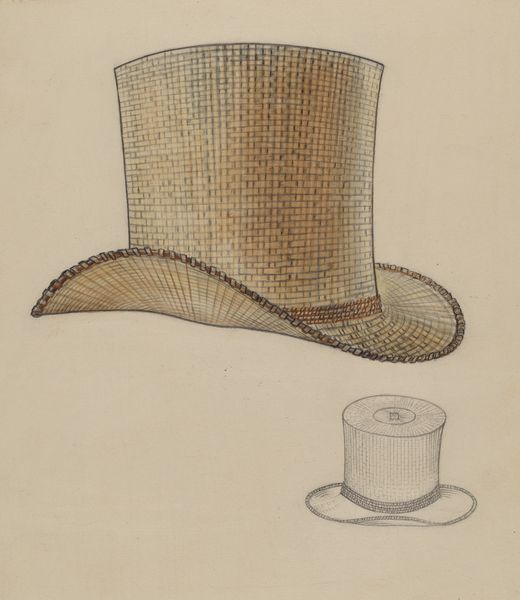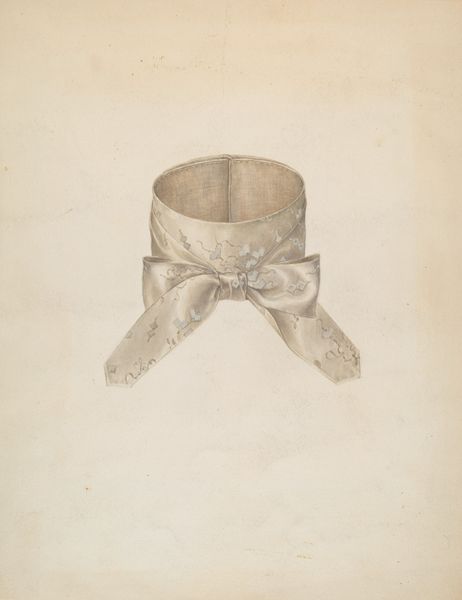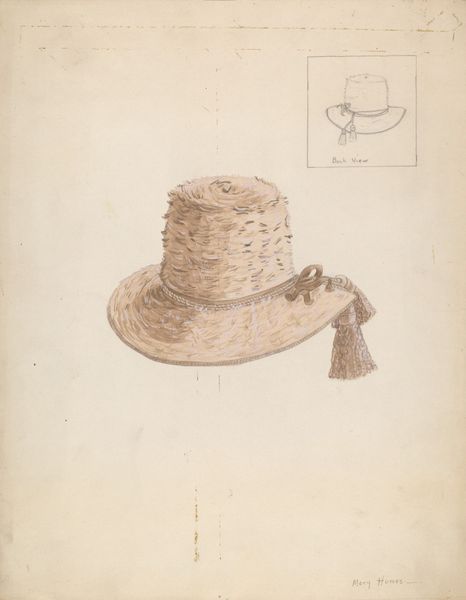
drawing, pencil
#
portrait
#
drawing
#
pencil
Dimensions: overall: 28.2 x 33.6 cm (11 1/8 x 13 1/4 in.)
Copyright: National Gallery of Art: CC0 1.0
Editor: So, here we have "Shaker Man's Hat," a pencil drawing from around 1936 by Ingrid Selmer-Larsen. It's interesting how a simple object like a hat is rendered so carefully. What do you see in this seemingly plain portrait? Curator: I see more than just a hat. Consider the Shakers – their craftsmanship was central to their belief system. This drawing, with its precise pencil strokes, elevates the hat, this crafted object, beyond mere utility. It's a document of labor, of the making. What kind of material do you think this hat is made of, judging from the artist’s rendering of the textures? Editor: It looks like maybe felt? Which feels… practical, sturdy. It definitely aligns with the Shaker values I've read about. How does the social context affect our interpretation of it? Curator: Precisely! Think about the production of felt, the sheep rearing, the carding, the fulling... it speaks of an entire social network and its associated manual labour. The drawing isn't just a likeness; it's an index of all these processes, even consumption. And by documenting it, Larsen challenges our notions about 'high' art. The humble hat becomes worthy of contemplation. Editor: So, it’s about acknowledging the value embedded within the production and purpose of this seemingly ordinary item? Curator: Exactly. This isn't just portraiture; it’s a testament to the materials, the process, and the people that brought it into being, making a point of aesthetic appreciation in the everyday object. It shifts the focus away from just visual appeal and invites us to examine the entire web of creation and usage. Editor: That’s a fascinating perspective, repositioning our focus. Thanks, that gives me a lot to consider when I look at everyday objects now! Curator: Indeed! And it reminds us to appreciate the hidden histories woven into the simplest things.
Comments
No comments
Be the first to comment and join the conversation on the ultimate creative platform.
